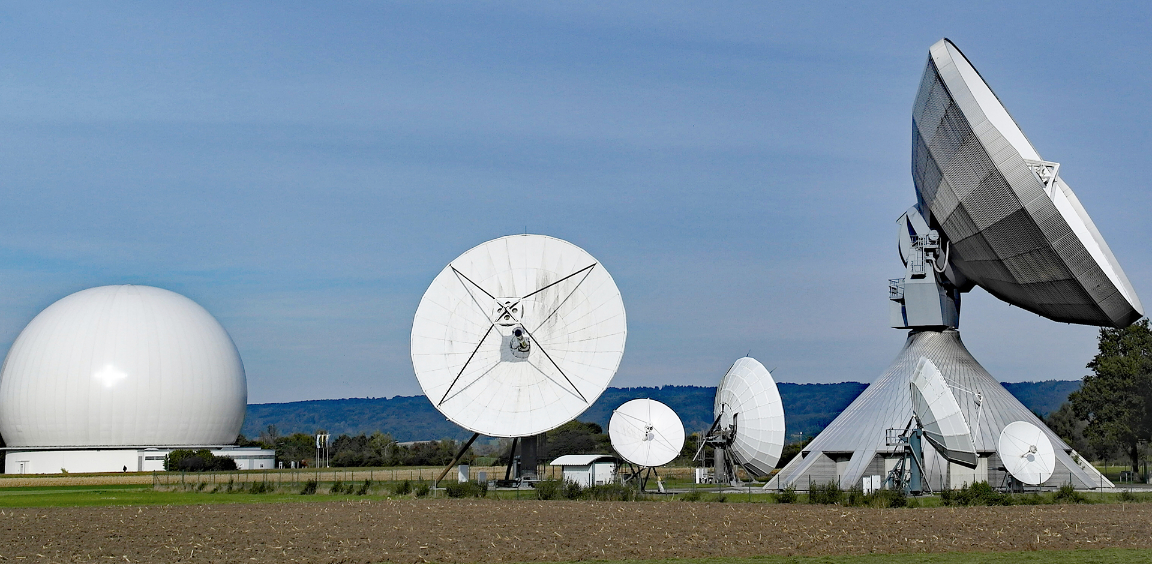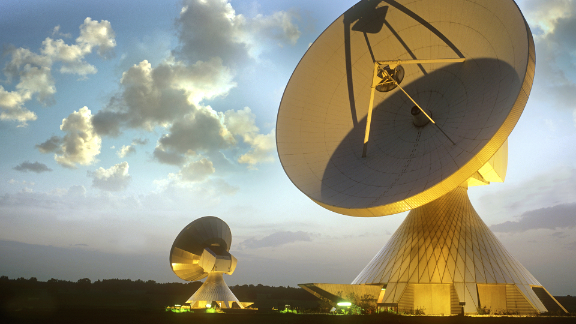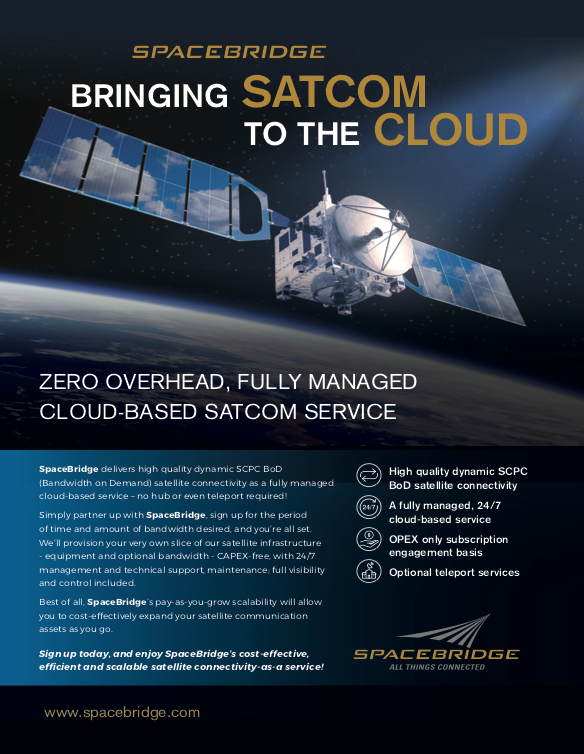We are all aware how society’s ongoing demand for constant connectivity and bandwidth has driven the need for more high-quality communications services. Hence Quality of service (QoS) and reliability are priorities for service providers in the ground segment.
Managing services, both operationally and in terms of cost, are critical in ensuring that seamless services are rolled out to consumers at a fair price. This is challenging in today’s environment where satellite communications capacity is exceeding demand.

Competition is rife and without the combination of QoS and the right price for consumers, service providers will not to be able to contend alongside competitors. This against the backdrop of migration to the cloud, primarily driven by 5G, will also leave those who do not change to meet the new technology requirements behind.
How On-orbit Changes are Impacting the Ground
As an industry, significant changes have occurred on-orbit over the last 10 years which have had, and continue to have, a significant impact on the ground segment technology. In recent years HTS, VHTS and NGSO satellites have increased both the available bandwidth and the associated capacity.
For example, a modern VHTS satellite may have a throughput of 1Tbps. The overarching trend for satellites services has been the switch from video to data in the satellite market. The current and future industry drivers include IoT, 5G and mobility (e.g., In-Flight Connectivity (IFC) and Maritime) as well as backhaul, which is expected to see the largest growth in the coming years as 5G is rolled out.
As demand has not kept up with the increasing capacity, capacity pricing has fallen. With supply continuing to exceed demand probably until the mid-decade, this is good news for the end users of satellite services; however it has increased pressure in the ground segment in terms of CAPEX and OPEX presenting a more challenging environment for ground segment teleports and service providers.
This has had a significant effect on the services needing to be delivered from the teleport in terms of their QoS, resilience and reliability of their signal throughput. Along with the growth of HTS, VHTS and NGSO satellites, satellite frequencies have also increased – currently with Ka and Ku as the main bands – with a further increase to the Q/V bands anticipated in the medium to long term. This again can present significant cost and technical challenges.
For example, Ka band is subject to rain fade especially in the tropics and mitigation is provided by using diversity antenna sites which are 10s of kilometres apart. These are connected by DWDM or CWDM (distance dependent) RF over Fibre to ensure signal integrity, as well as provisioning the transport of multiple signals.
In addition, NGSO and GEO satellites will have different requirements for the ground station and end user terminals. Keeping an antenna aligned with a GEO satellite is relatively easy due to the lack of relative movement between the Earth and the satellite. However, when considering a LEO satellite at an altitude of 1000 km, the satellite is crossing the sky at a rate of approximately 7.3 km/s. In addition, because of their small Field of View (FoV) on the Earth, a large number of satellites are required to provide adequate coverage.
This is unlike GEO satellites which cover most of the Earth’s visible surface with their much wider field of view at 36,000 km altitude. Hence for NGSOs (MEO and LEOs) the ground station antennas must be able to track and seamlessly change over satellites as they cross the sky and go in and out of view. Conventional parabolic antennas can do this; however, their price is high and only acceptable in private enterprise or Government/Military markets.

In terms of provision of broadband internet services direct to end users, Flat Panel Antenna Technology (FPA) is key to providing a low-cost end user terminal. At this time, FPA technology is not mature and the business plans of some proposed LEO operators based on “broadband for all” are questionable. However, NGSOs will generally
require more capability on the ground in terms of new antennas and built in resilience and redundancy for the signal distribution and transport equipment.
As space gets busier, so does the ground segment — it is critical that services QoS and reliability are maintained in order to guarantee end-user satisfaction and loyalty.
Cloud Tech for Teleport Data
Beyond the obvious changes being rolled out on-orbit, the satellite ground segment is handling an increasing amount of data. It is seeing significant changes in its role within the broader communications landscape; the satellite industry is integrated more into the terrestrial communications market towards the Internet of Everything Everywhere (IoEE) and the overall communications eco-sphere.
The concepts in 5G and the cloud of Edge computing, Network Function Virtualisation (NFV) and Software Defined Networks (SDN) are set to change how networks are structured throughout the ecosystem. Physical infrastructure is still required at the bottom of the network, however there will be a need for this to interact and integrate with sophisticated technologies within the delivery process.
5G is promising ubiquitous coverage and will need to integrate its own Radio Access Technologies (RATs) with other RATs to deliver this. These include 4G/LTE, Wi-Fi, Wi-Max, MIMO, and satellite communications. Integration is key in delivering satellite backhaul and other services within these new cloud-based infrastructures.
For the ground segment stations and teleports this presents both opportunities and challenges. For example, teleports could become data storage and analysis centres as well as Network Communications Centres (NOCs). The challenges lie in the changes they will be required to make to transition from purely analogue RF technologies to digital cloud-based technologies.
In the short to medium term, those who do not change will surely fail. This implies more digital signal processing and the need to convert the satellite RF frequencies to a digital format to provide the necessary signal stream for data storage, analysis, and transport interface to the “edge.”
This means that teleport operators will be expected to go beyond traditional duties of RF management and deliver digital services. Once again, the physical infrastructures underpinning the centres will need to remain resilient and reliable in order to collect the RF signals (with high-quality equipment still being at the core of RF signal management) however the infrastructures will require significant revamps to manage the data virtually. Of course, the benefits of cloud working are significant; services will be flexible, scalable, and cost-effective as well as fitting into the broader picture of cloud-working with various industries.
IoT and Big Data
As indicated above, new opportunities are being introduced within the ground segment. IoT teleports are an example of this; demand for IoT (M2M — Machine to Machine communication) has exploded in recent years with the expected number of connected IoT devices to reach 75 billion by 2025. Industries such as energy, maritime, cruise, aviation and broadcast are all using more data as well as relying upon data collection within IoT applications.
This presents major opportunities in big data and its analysis. Many sectors are relying upon SATCOM to connect and maintain IoT services due to the remote nature of working. Currently, the majority of IoT applications are narrow band, however, this will evolve to broadband in many applications as sensors/applications become more sophisticated.
For example, detecting and reporting a pressure drop in a pipeline is a simple sensor and transmitter and requires simple data narrowband. However, flying a drone along the pipeline to find the leak with Electro-Optic sensors is more complex and needs broadband in terms of the data.
With IoT being used to manage huge portions of operations, including data collection and analysis, it is critically important that the data is relayed reliably to the teleport. As indicated above with the amount of data being carried through and processed at the ground segment there is a huge potential for teleport operators to move into big data analytics and data storage.
There is certainly a large amount of value in processing and analysing data and teleport operators are quickly evaluating how their current infrastructures can be transformed for this capability. We are seeing an increase in the use of data in all sectors, including high-resolution and real time data.
The Impact on Teleports
There is no disputing that this is an exciting time for the ground segment; new opportunities are being delivered both from on-orbit changes as well as the possibility of adopting new roles within data collection and processing and cloud infrastructures.
The ground segment’s role is becoming enhanced and delivering fresh business opportunities to operators which will require new business models leading to changes in the value chains. Among these new openings, there are operational and technical challenges which must be addressed in order to enable accurate and efficient services. At its core, the ground segment must understand the value of receiving high-quality communications via RF – poor quality signals can lead to poor quality data and services.
To thrive within the potential new guises, teleports must establish complex and sophisticated infrastructures which integrate with new technologies, such as 5G and cloud-based services, in order to future-proof their services. We know Big Data could potentially open huge revenue opportunities, however we also know that the signals between teleport and orbit must be managed efficiently in order to send and receive reliable data.
The teleport’s role is growing alongside space use, and improving accuracy and resiliency is key in enabling all parts of the services available to run cohesively alongside one another. We know that many of these services will mutually benefit from each other’s success, ultimately strengthening the services being offered to the end consumer.

Without successful communications via RF at its core, SATCOM simply cannot thrive. Ensuring RF management is completed correctly can unlock enormous opportunities for all, but perhaps none more so than the ground segment.
www.etlsystems.com
Author Alex Donnison is the Business Development Manager at ETL Systems.


